Where George Washington Walked
Touring Charleston's Heyward-Washington House built in 1772
The birthday of founding father and first president of the United States, George Washington, was February 22. It is officially celebrated by the federal government every February, although some refer to it as Presidents’ Day.
Have you ever thought about what it might have been like to be in the presence of a historical figure? What would you ask, and how would they speak? What if you could visit a place where they had stayed?
The Heyward-Washington House in Charleston, South Carolina was built in 1772 by Thomas Heyward Jr., one of the signers of the Declaration of Independence. In 1791, George Washington visited Charleston and stayed here for a week.
The house is especially interesting because the 1740’s kitchen building and slave quarters are also open for visitors. Inside, we see the large fireplace and workspaces for food preparation and cooking on one side, as well as a laundry area on the other side of the hearth.
Viewing these buildings reveals much about the brick and plaster construction techniques common in 18th century cities.
I was surprised to find the property had been prepared with a well-designed rainwater catchment and management system with wells, storage cisterns, and drains for wastewater. This allowed for everyday access to water under normal circumstances.
Between the Kitchen and Stable behind the main house is a garden space which has been restored and maintained. This helps visitors get a feeling of what it might have been like back then.
Inside the main house, an archway crafted from mahogany distinguishes between the public-access and private portions, since this was also an office for Thomas Heyward, Jr.
On the second floor, a tea room furnished with period pieces is representative of how it might have been set when George Washington resided here for a week, perhaps relaxing by the fireplace. An authentic 17th-century spinet, a type of 4-octave harpsichord or plucked keyboard, is positioned along the wall in the tea room. These instruments were commonly used for [quite civilized] entertainment in the era.
A beautiful mahogany staircase leads from the first floor to the second, where guests would have been welcome, and ultimately up to the third floor, a space for private family rooms.
The office in the first floor contains interesting artifacts from archeological digs on the property, which trace its history back even further than the 1772 construction of the current house.
Of course, there is a portrait of George Washington above the fireplace mantle.
The house is filled with rare and original wooden furniture the Heyward family acquired from various Charleston area cabinetmakers.
Many interesting old bottles are included among the excavated artifacts. I thought the iridescent copper-blue effect on one of them was quite interesting. I wonder how the glass was treated in order to achieve this color.


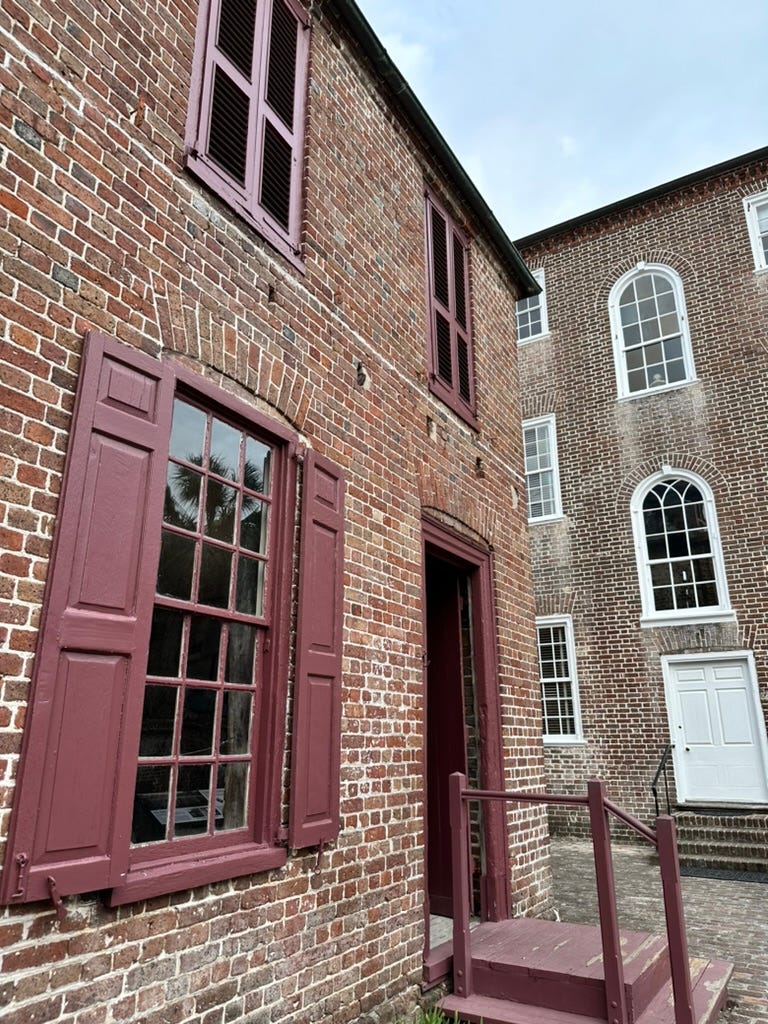
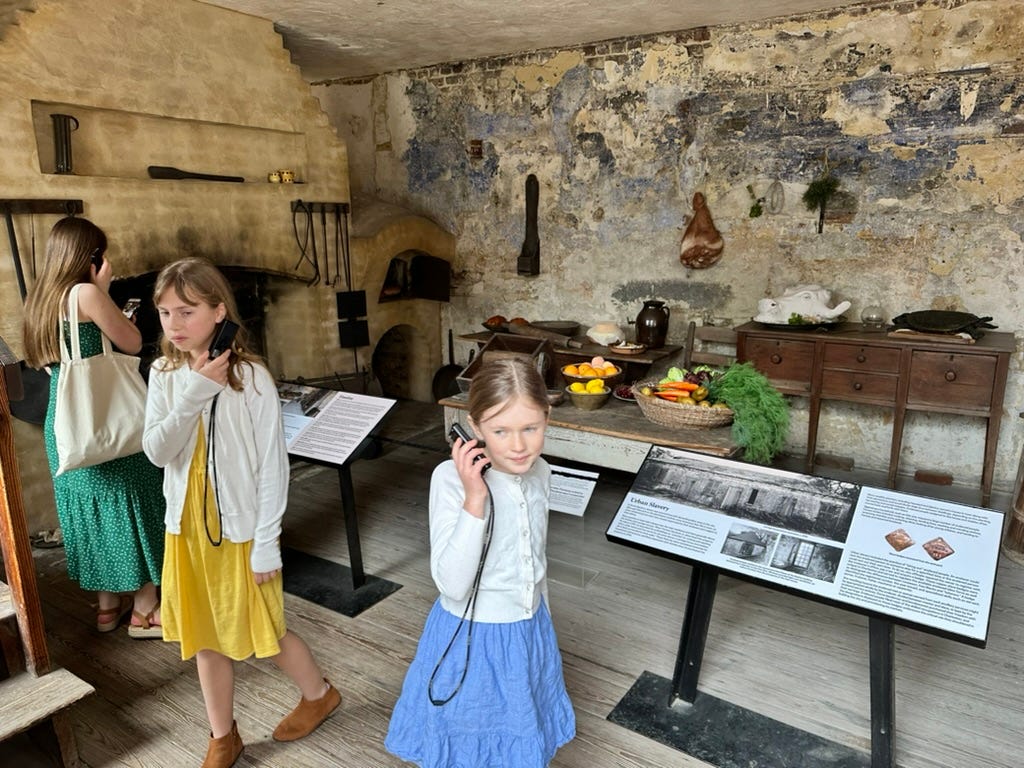

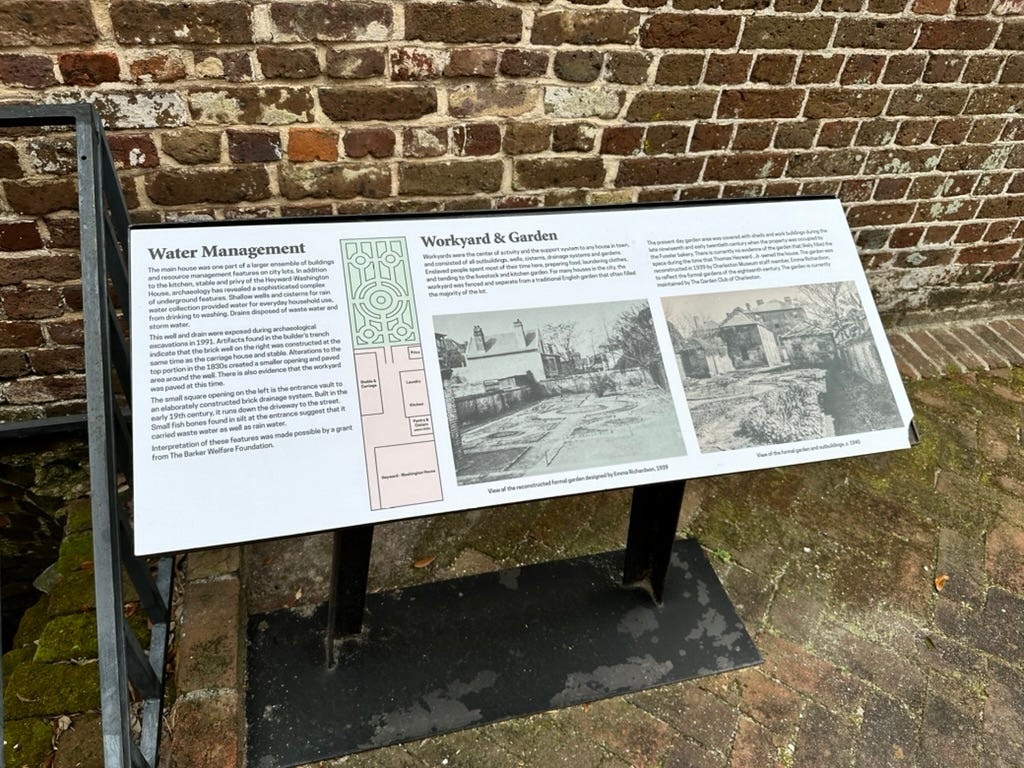
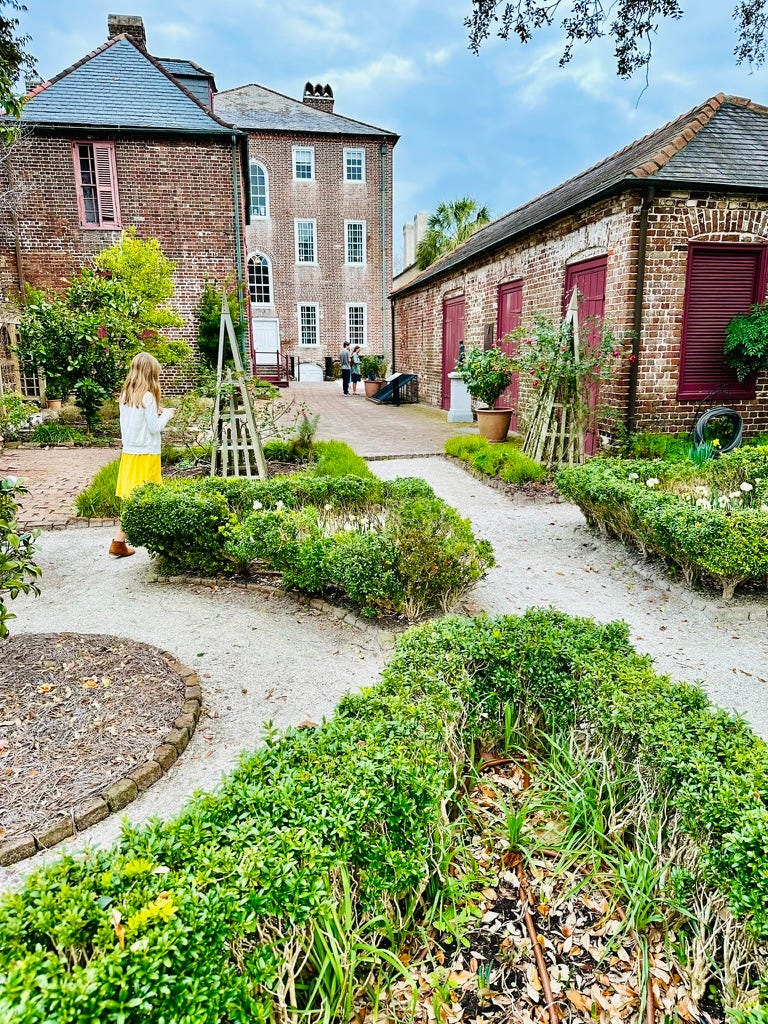

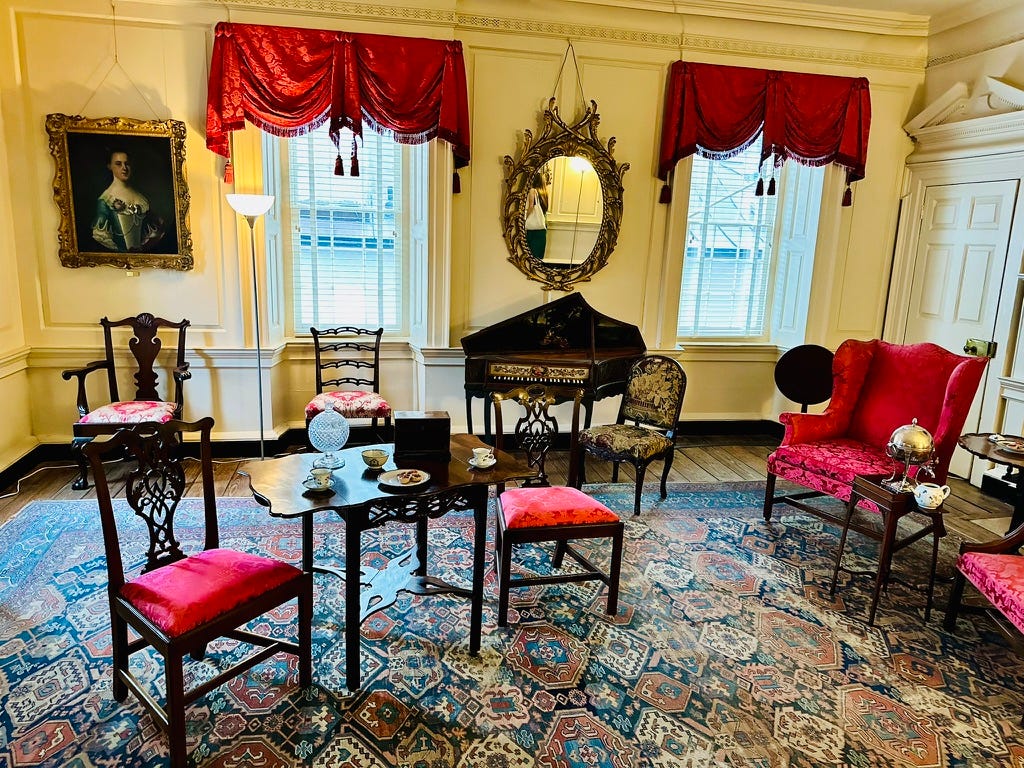
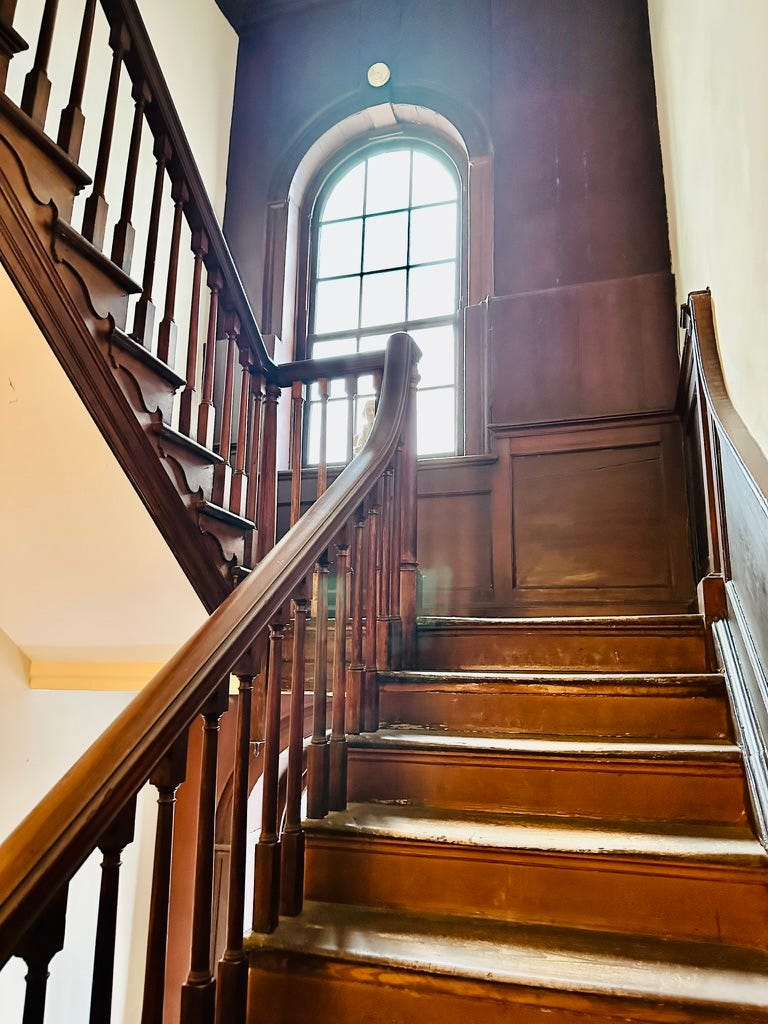


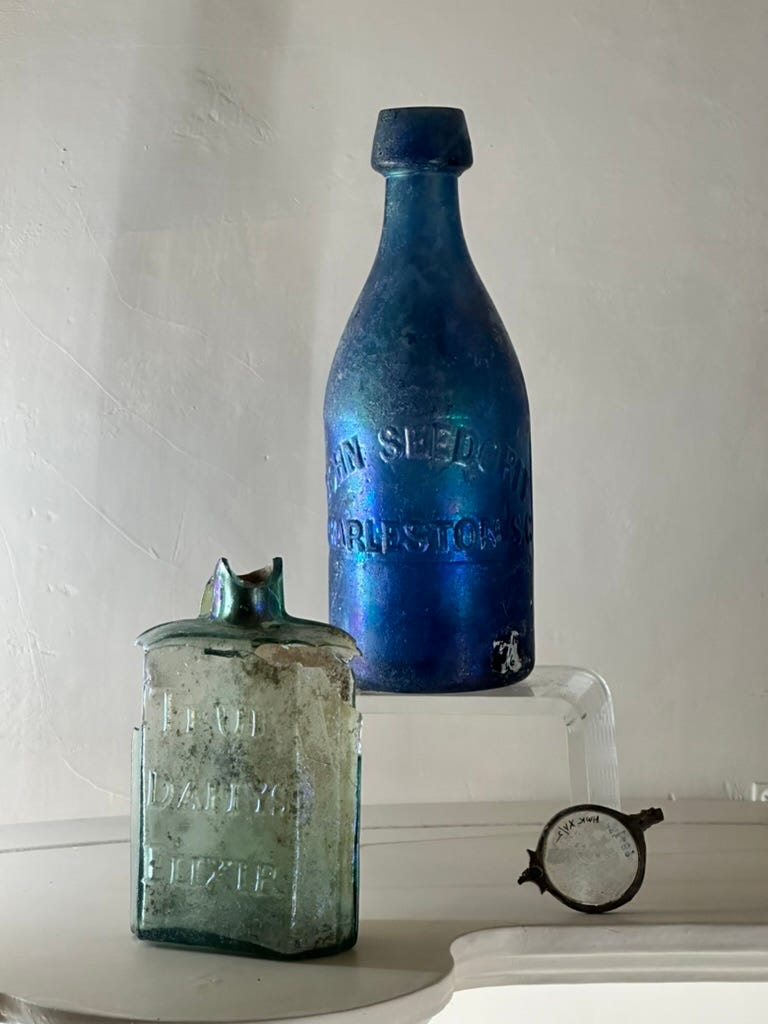
That colbalt bottle is likely my favorite color of blue! I’ve often thought as a little girl I would have loved to live in colonial America! I love a good story and it’s why I’m so fascinated in history!